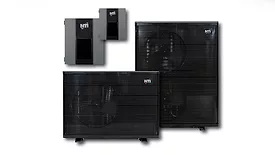Home » Keywords: » air-to-water heat pumps
Items Tagged with 'air-to-water heat pumps'
ARTICLES
NTI has announced a new air-to-water heat pump series.
Read More
Hydronics Workshop | John Siegenthaler
Rethinking Heat Transfer: Why 'Natural' Isn't Always Ideal for Air-to-Water Systems
As air-to-water heat pumps replace boilers in North American hydronic systems, designers must rethink traditional approaches to heat transfer, or risk costly and inefficient installations.
June 16, 2025
Hydronics Workshop | John Siegenthaler
Be prepared to advocate for hydronic-based heat pump systems
Different strokes.
March 9, 2025
Hydronics Workshop | John Siegenthaler
Heat pumps open possibilities for DWH and hydronic-based cooling
Expanding a concept — part two.
February 4, 2025
The Glitch & The Fix: Januar 2025
A hydro-split air-to-water heat pump system that ‘sorta’ works
January 27, 2025
Duel-fuel solution offers best of both worlds
Hydronic electrification leverages residential solar.
January 7, 2025
Hydronics Workshop | John Siegenthaler
Adding functionality to heat pump systems
Expanding a concept — part one.
January 2, 2025
Hydronics Workshop | John Siegenthaler
The convergence of hydronics
Modern hydronic technology binds new technologies and desired outcomes together and creates unprecedented market opportunities.
October 4, 2024
Keep your content unclogged with our newsletters!
Stay in the know on the latest plumbing & piping industry trends.
JOIN TODAY!Copyright ©2025. All Rights Reserved BNP Media.
Design, CMS, Hosting & Web Development :: ePublishing











